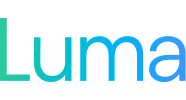
Your journey to GxP compliance starts here
Dotmatics supports customers with their GxP requirements, processes, and workflows.
Table of contents
GxP compliance is more than a buzzword in the pharmaceutical industry. Meeting health authority regulations that govern the entire drug lifecycle ensures standardized research and development processes, lab data integrity, and improved business outcomes.
GxP: Beyond buzzwords
So what does GxP stand for? GxP means Good x Practices. The "x" refers to the field in which the regulations apply. Here are some examples:
GLP for Good Laboratory Practice
GCP for Good Clinical Practice
GMP for Good Manufacturing Practice
With all these acronyms, navigating the regulations might sound quite a challenge. But don't worry, Dotmatics has got you covered.
We can be your source of GxP knowledge
Dotmatics speaks multiple GxP languages — whether it's GLP, GCP, GMP, you name it. So let us be your systems translator:
We can help you navigate your GxP processes to determine how the Dotmatics solution can integrate into your workflows based on the partnerships we have built with top pharmaceutical companies.
We can help you configure the software based on industry best practices while also remaining compliant with all applicable regulatory requirements as well as your internal requirements.
Building out processes and procedures in compliance with the FDA's 21 CFR part 11 regulations
The 21 CFR part 11: Electronic Records; Electronic Signatures is applicable to all GxPs throughout the pharma development, manufacturing, and distribution lifecycle.
Part 11 defines three critical requirements of every electronic system utilized in the pharmaceutical development and distribution lifecycle (validation, electronic records, and electronic signatures).
The Dotmatics platform meets the requirements for electronic records (such as audit trails) and electronic signatures (such as password controls).
Meeting the expectations of ISO 9001 and ISO 27001
The International Organization for Standardization (ISO) certifications are not enforceable, but many of their requirements also overlap with regulatory GxP regulations. For example, companies that are ISO 9001 certified have demonstrated through a third-party audit that they have implemented controls to support the quality management system requirements.
Being ISO 9001 and ISO 27001 certified indicates that Dotmatics has implemented a compliant quality management and information security management system to support its products by providing a platform to conduct SDL activities in a controlled and consistent manner.
Here are the controls we have to ensure consistent and repeatable processes:

Controls and procedures for user access, asset management, and technology provisioning

Document management for drafting, storage, and retention of policies, SOPs, and more

Corrective and preventive actions for deviations

Training and vendor management programs

Internal and external audit programs

Design and development practices
Why you should use Dotmatics software within your new or existing GxP processes
The Dotmatics platform can be easily integrated into existing or new workflows to support your GxP processes and regulatory requirements, including those related to clinical and laboratory practices.
Guidelines ensure standardized processes
Implementation of appropriate and relevant GxPs requirements contributes to standardized, repeatable, and compliant processes. This approach is critical to ensure consistency and limit defects.
Software validation leads to reliable R&D
Validation is a requirement of 21 CFR part 11 compliance. Being a validated product helps to ensure that the software will always perform in a predictable and reliable manner, enabling data integrity, traceability, and transparency of the computer systems.
Compliance minimizes business risks
Enforcing compliance helps to prevent and detect regulatory violations that could put your business at risk. For instance, organizations found non-compliant in an FDA inspection may be issued a notice of inspectional observations — commonly referred to as form 483. Failure to resolve the issues could eventually lead to a dreaded warning letter.
GxP regulations support R&D digital transformation
Reap the benefits of GxP compliance in the pharmaceutical industry:
Traceability and accountability
To meet compliance, pharma companies need to document and log actions during the production process, from research and development to manufacturing and release.
These requirements help to ensure that organizations can trace their records to each stage of the production process, being able to reconstruct the entire history of a product and effectively drill down and find the source of any deviation or issue that arises.
Data integrity and security
Compliant workflows also ensure that the data is accurate, complete, and consistent over its lifecycle. Data security is also crucial to data integrity, so having controls for secure storage, access management, backup, and recovery are equally important.
For an in-depth look at the state of data integrity and data security in the life sciences industry, download our white paper.
Frequently asked questions
Regulation vs standard vs guidance: what is the difference?
Here is the difference between regulations, standards, and guidance:

Regulations
Regulations are requirements set forth by a government body, such as the FDA, and are enforceable by actions if a company is found non-compliant. An example of regulation is the FDA CFR Title 21.

Standards
Standards are put together by independent bodies, such as the ISO. Complying with a standard is optional. Non-compliance is enforceable only by the certified body that audits the company and they alone can revoke the certification if found non-compliant. The ISO 9001 certification is an example of an industry standard.

Guidances
Guidances are typically put together by a consortium of industry peers. These documents usually detail how a company can meet the expectations of regulations and standards. Guidances are optional to review and implement. An example is the GAMP guideline.
What does GAMP stand for?
GAMP stands for Good Automated Manufacturing Practice. Pharma companies that have a strong quality department are aware of the importance of adhering to this guidance document for the development, testing, implementation, and use of compliant GxP computerized systems.
What is the GAMP categorization of Dotmatics software?
The GAMP categorization determines the appropriate level of rigor required for all activities in the software development lifecycle, with category 5 (custom or bespoke software) being the one with the highest rigor and risk.
The Dotmatics Browser ELN is categorized as a GAMP 5, category 4 software product (Configured Product). Dotmatics supports end-user workflow configuration, allowing customers' specific requirements to be met. Dotmatics does not support nor allow any custom or bespoke components by design, as doing so would raise the risk level of the platform, making it category 5.
Ready to transform to data-driven decision making?
Get in touch so we can provide you with a demo based on your specific needs.




